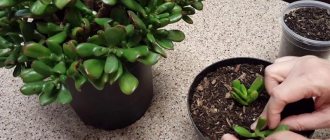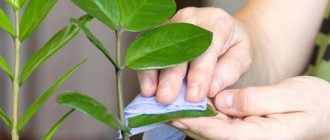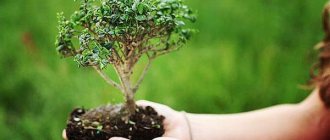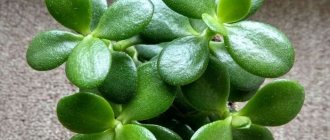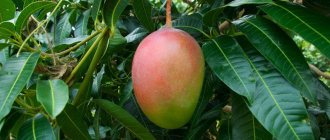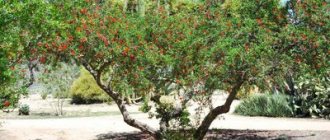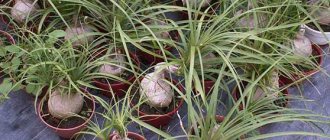| Benefits How to eat Contraindications Growing How to choose |
Thai mango fruit has a rich, amazing, special taste. It contains notes of peach, raspberry, pineapple, melon and apricot, and some even detect a slight taste of pine! It has a unique aroma and is a storehouse of useful vitamins and minerals that have a beneficial effect on our body. The largest exporter of the exotic fruit is India, but Thailand, one of the three main suppliers of mangoes, grows the most delicious and aromatic fruits in the world. According to the criterion of the best varieties and their total quantity, the country occupies a leading position. One has only to try the honey Chok Anan or the Nam Dok Mai and Mahachanok bred here, and any doubts will instantly disappear!
Photo: © ArtistLens (Pixabay Free License)
The peculiarity of Thai mangoes lies in their unusually juicy, smooth and silky pulp with virtually no fibers, an amazing, literally enveloping aroma and delicious taste. But this can only be said about fruits purchased in Thailand itself, and not on the shelves of our supermarkets. And all because the most delicious mango is the fruit that ripened on the tree, and not in the store.
From history: mysticism and religion
Fragrant mango fruits have been known to mankind for thousands of years. The history of its appearance on earth can be found in many modern religions.
In the Indian epic, the history of the mango fruit is associated with the many-armed god Shiva and his wife Parvati. Allegedly, Shiva recreated a mango tree on earth to please his beloved. Since then, the exotic mango fruit has been considered a symbol of passionate love.
Followers of Hinduism consider the fruit to be one of the incarnations of the god Prajayati - the Creator of All That Is. And Buddhist legend attributes the holiness of this plant to the fact that the Buddha himself washed his hands over the planted seed.
Royal mango - the sweetest variety
Its spread throughout the world is due to the development of trade routes. Traders brought mangoes from Persia to Africa and the Middle East. The Asian apple came to Europe during the campaigns of Alexander the Great.
In India, they believe that mangoes bring prosperity, comfort and happiness. The branches of the exotic plant are used to decorate houses, and the valuable fruit is placed in the foundation.
Find out all about the taste, benefits and aroma of macadamia nuts
Possible problems during cultivation
With poor watering and poor humidity, mangoes can be affected by spider mites. Excess moisture can expose the plant to powdery mildew or anthracnose. These diseases are of course treated with many chemical drugs.
But in order to avoid their occurrence, it is better to adhere to the necessary agrotechnical rules and you will never have unnecessary troubles and disappointments. And for your patience and attention, mango will delight you with active growth, very beautiful flowering, and later reward you with beautiful sweet and very healthy fruits.
How and where it grows
The genetic diversity of mango trees is concentrated in the regions of south and southeast Asia:
- Philippines;
- Indonesia;
- Burma;
- Sri Lanka;
- Pakistan;
- Bangladesh.
And yet, the tropical forests of Myanmar, the northeastern part of India, located at the foothills of the Himalayas, are called the birthplace of the fruit.
The mango tree loves sun and tropical climates. It is unpretentious to the composition of the soil, so it feels comfortable on the sandstones of Pakistan, Thailand, the rocky soil of Mexico, and the brackish limestones of Israel.
The height of an adult plant ranges from 10 to 45 meters. For the first 5 years it does not bear fruit or bloom. In mature trees, the fruiting period reaches 300 years. The color of the leaves determines the age: the crown of young trees is red, of mature trees - green. The leaves of very young shoots can be purple, almost black.
Each branch of the mango tree bears fruit at intervals of a year. Modern agricultural technologies allow specialists to obtain two harvests a year by “awakening” dormant branches, maintaining their order of participation in the process.
How to plant mango from seed at home
There are two ways to plant a mango tree:
- seedlings;
- bone.
When choosing the first method, almost absolute survival rate is guaranteed. The seedling can be bought at an exotic plant nursery and then transplanted into a spacious pot.
Sprouting mango seeds is a more labor-intensive process, but less expensive. It requires preliminary preparation of planting material, which is carried out as follows:
- Soak the bone for 5-7 days in warm water.
- Carefully open the softened planting material with a knife and remove the seeds.
- To protect against rotting and fungal damage, treat the seeds with a fungicide. We place them in wet sawdust.
- Move the container with sawdust to a warm, dark place. We moisturize periodically.
After three weeks, the first shoots will appear and can be transplanted into the ground.
How to replant correctly and with what frequency
The plant does not like frequent transplants. Initially, it is planted in a pot, at the bottom of which there is at least 5 cm of drainage made of pebbles or expanded clay. Caring for the seed and sprout is different:
- We deepen the seeds into the soil by 2 cm. We insulate the top with film, a jar or a cut plastic eggplant. We remove the insulation every day to avoid rotting of the roots. Keep the pot in a warm but dark place.
- The optimal conditions for “awakened” sprouts are constant sunbathing. A phytolamp will help replace them in winter.
The mango tree does not tolerate sudden temperature fluctuations and changes in soil composition.
During the first 3 years, the tree is replanted no more than once a year, choosing deep containers suitable for the plant’s root system. Then this process is carried out once every 3 years.
Quick dessert with mango, dragonfruit and strawberries
How to grow
To grow an exotic mango plant at home, you need to create favorable conditions for it, including:
- temperature regime at 25-26 degrees;
- daily spraying with a spray bottle, using a humidifier or placing containers of water near the tree;
- watering 2-3 times a week;
- monthly fertilizing with organic and mineral fertilizers.
At the age of 2-3 years, the mango tree is grafted.
The mango will also need pruning as it grows. When 8 leaves appear on the tree, pinching is carried out. Upon reaching a height of 1.5 m, formative pruning is carried out annually, leaving up to 5 shoots.
Appearance
The mango tree looks very majestic in appearance: it can grow up to 30 meters in length, and with a wide rounded crown over the years it can grow up to 40 meters in width, straightening out and thinning towards the top. The root on well-fertilized soil is capable of going 6 meters deep with the germination of supporting rod branches.
The mango tree is practically an evergreen long-liver: it can grow and bear fruit for 300 years. It looks very beautiful during flowering, densely covered with small flowers of yellow or red shades. Fruit shapes may vary in shape, color and quality. Round, oval, oblong - they are almost always somewhat curved in shape. The size of the fruit can vary between 7-25 cm. The color of mangoes can be green, yellow, pink, red and even grayish and purple when ripe. The pulp can be either pale yellow or bright orange. Inside the fruit there is a yellowish-white pit of a flat oval shape, from which, by the way, you can grow a tree.
Composition and benefits of fruits for the body
The beneficial properties of mango fruit are due to the peculiarity of its composition. These data are shown in the table.
| Name | Quantity per 100 g |
| Squirrels | 0,82 |
| Fats | 0,38 |
| Carbohydrates | 14,98 |
| Water | 83,46 |
| Ash | 0,36 |
The energy value of 100 g of exotic mango fruit is 60-67 kcal, depending on the variety. The content of vitamins and microelements is distributed as follows:
| Name | Content per 100 g |
| Potassium | 168 mg |
| Phosphorus | 14 mg |
| Calcium | 11 mg |
| Magnesium | 10 mg |
| Sodium | 2 mg |
| Vitamin C | 36 mg |
| Vitamin B4 | 7.6 mg |
| Vitamin E | 1.12 mg |
| Vitamin A | 0.3 mg |
The components comprehensively heal the body, but mango fruit is especially useful for:
- prevention of the formation of kidney stones and the development of cancer of the blood, colon, breast, prostate;
- strengthening the heart muscle;
- lowering cholesterol levels and clearing blood vessels of cholesterol plaques;
- improving complexion, vision, memory;
- normalization of alkaline balance, digestive processes;
- increased libido;
- weight loss;
- strengthening the immune system.
Ayurveda classifies mangoes as aphrodisiacs. In some Asian countries, mango tree leaves are thrown at the feet of the newlyweds at weddings. It is believed that this helps the appearance of offspring.
Healing properties
In places where mango has been growing for many centuries, it is used not only for food, but also for medicinal purposes. It is believed that eating this fruit helps prevent cancer of the genitourinary system.
It is also used as a natural immunomodulator, thanks to the combination of vitamins B, C and carotene. Mangoes are also credited with the ability to relieve nervous tension, improve mood, overcome stress and significantly increase a person’s sexual abilities.
The content of certain enzymes and a large amount of fiber in the “great fruit” gave rise to the idea of using it to calm the stomach, and regular consumption guarantees the prevention of constipation and colon diseases.
Mango aroma and taste
The sweet, juicy fruit has different flavors - peach, melon, lemon. The pulp perfectly quenches hunger and thirst.
Regardless of the variety, the aroma of the fruits of the mango tree has light pine notes.
Difficulties in transportation for centuries have left mangoes in the rank of delicacies. The length of his stay on the road spoiled ripe fruits, and deprived unripe ones of juiciness and aroma.
Exotic use
The scope of application of the mango fruit covers several important industries, including cosmetology, cooking, and the confectionery industry.
Asian apple in cooking
In different cuisines of the world, both ripe and unripe pulp of exotic fruits is used to prepare salads, side dishes, and sauces. However, green mango can be added in moderation, as its high content of various acids can cause digestive problems and stool upset.
Mango with smoked chicken
The bright combination of smoked chicken with exotic fruits is complemented by nuts. 100 g of this dish contains 153 kcal. You can reduce calorie content by replacing smoked meat with boiled breast.
To prepare 4 servings of salad you will need:
- Mango - 1 pc.
- Avocado - 1 pc.
- Smoked chicken – 300 g
- Arugula – 100 g
- Pine nuts - 2 tbsp. l.
- Citric acid - 1 tbsp. l.
- Orange juice - 2 tbsp. l.
- Olive oil - 2 tbsp. l.
- Grainy mustard - 1 tbsp. l.;
- salt, pepper - to taste.
Some of the ingredients are needed for dressing.
Let's prepare it step by step:
- Fry the nuts until golden brown.
- Wash the arugula, dry it with a paper towel and tear it into pieces.
- Chop the chicken into small pieces.
- Peel the fruits and cut the pulp into slices. To prevent the avocado from darkening, sprinkle it with lemon juice.
Mango butter replaces cocoa butter in the confectionery industry. But due to the high cost of its production, the product was not widely used.
Place on a plate in layers: arugula, chicken, fruit. Pour a dressing of oil, juice, mustard and spices over the workpiece. Sprinkle everything with pine nuts.
Application in the beauty industry
An antiseptic oil reminiscent of shea butter is prepared from the pistachio-shaped mango seeds. It is used as a rub for muscle pain, as well as for pathologies such as:
- eczema and ulcerative skin lesions;
- itching from insect bites;
- dermatitis.
Asian apple pulp is suitable for all skin types. Masks and lotions based on it are made both using the product in its pure form and with the addition of accompanying cosmetic superfoods.
Mango butter restores skin elasticity and firmness. It is used in masks, creams, and in cryotherapy. It protects the skin from exposure to ultraviolet radiation and other aggressive environmental factors.
Fruit mask for dry skin
The composition saturates the dermis with vitamins, lipids, antioxidants, actively moisturizes and promotes cell regeneration.
You can make it at home using the following ingredients:
- Mango - 1 pc.
- Avocado - 1 pc.
- Honey - 2 tbsp.
Procedure for preparing a cosmetic product:
- Cut off the peel of the fruit. Grind in a blender to a paste consistency.
- Lightly heat the honey in a water bath.
- We combine it with the main ingredients.
Apply the composition to cleansed skin for 15-20 minutes, after which we wash with warm water. Remove the remainder with a sponge.
Landing rules
Make a small hole on the surface of the soil into which the seed is placed, root down. If it has not been previously germinated and the root is poorly defined, plant it with the long side (rib).
It is considered correct not to bury the seed completely, but to leave about a third outside, as in the photo
After planting, water the soil and place the pot away from direct sunlight - they are detrimental to tender seedlings at the initial stage of growth. To speed up the germination process, greenhouse conditions are necessary: high humidity and constant temperature. To do this, cover the container with plastic wrap or a glass jar (seed only). The cover is removed regularly, every other day, for 15 minutes for ventilation.
As soon as a shoot with real leaves appears, the “greenhouse” is removed
The tree grows quickly. On a thin shoot, long leathery green leaves appear one after another, although the very first of them first have a purple tint.
How to choose a fruit
There are about 300 varieties of mango fruit, of which the sweetest is Thai. Depending on the area where they grow, fruits are distinguished by shape, weight and color. According to the last criterion, it can be:
- yellow;
- dark green;
- red-green;
- purple;
- almost black.
Coloring does not affect the ripeness of the fruit. You can determine it by its aroma and elasticity. Unripe mango smells faintly of alcohol or turpentine. Also, its flesh is deformed and does not restore its shape when pressed.
The green mango fruit is eaten in India, Thailand and the Philippine Islands, adding it to salads and sauces. The fruit contains citric, oxalic and grape acids, an excess of which can cause stool upset in Europeans who are not accustomed to such cuisine.
Serving, etiquette
A whole, ripe mango is cut into four pieces, each of which is turned skin side up and held in place with a dessert fork. Then the pulp is separated from the shell, and the slices are cut into pieces. Mango is eaten with a fork. Before serving, remove the pit from the fruit. To do this, the fruit is first washed, then the seed is cut around the seed across the fibers, and the halves are turned in different directions. If the bone has grown to the pulp, it is cut out.
When setting the table, bowls of water are placed near the mango dish or lightly moistened napkins are placed to clean the fingers from the dyes concentrated in the pulp of the fruit.
To soften the oily taste, the fruit is served chilled.
How to store mangoes depending on the degree of ripeness
In its entirety, ripe fruit cannot withstand more than 2 days in the refrigerator. Low temperatures contribute to loss of taste.
Peeled and sliced Asian apples can be stored for up to 3 months at temperatures down to minus 24 degrees. They are first placed in plastic containers. Re-freezing is not carried out.
The green fruit will ripen if it is wrapped in paper and left in the dark and warm for 2-4 days.
Mango smoothie
Contraindications
The skin of the tropical Asian apple can become an allergen, but the fruit itself can be eaten. Therefore, it is recommended to use gloves when peeling the fruit. Ripe mango pulp in large quantities causes fever, hives, constipation, clogs the stomach, and disrupts the functioning of the digestive tract.
When overeating green fruits, a person experiences discomfort in the epigastric region due to irritation of the mucous membrane of the respiratory tract, throat and stomach. Colic and indigestion may occur.
Where can I buy
You can buy mango fruit fresh, dried or dried . The price for them varies depending on the volume, country of origin and variety.
| Name | price, rub. |
| Dried mango, King (Vietnam), 1 kg | 1409 |
| Dried fruit pieces (Thailand), 250 g | 249 |
| Puree in an iron can (Myanmar), 430 g | 289 |
| Candied fruits (Thailand), 500 g | 279 |
| Puree (India), 850 g | 519 |
For its many beneficial properties for the body and diverse fruity notes, mango is called the “king of fruits.” Its juicy pulp is rich in vitamins and beneficial components that help maintain external and internal human health.
Interesting Facts
The mango-milk diet is extremely popular, allowing you to significantly reduce body weight. Very ripe and tender mangoes are suitable for this purpose. They should be eaten morning, noon and evening, washed down with plenty of milk. Mangoes have a lot of sugars, but no proteins, while in milk the opposite is true - there are few sugars, but plenty of proteins. For this reason, mango goes well with milk: one covers the deficiency of the other. In percentage terms, you need to use 4-5 liters of milk for 3-4 kg of mango, but the specific amount for each depends on the general state of health and individual characteristics.

